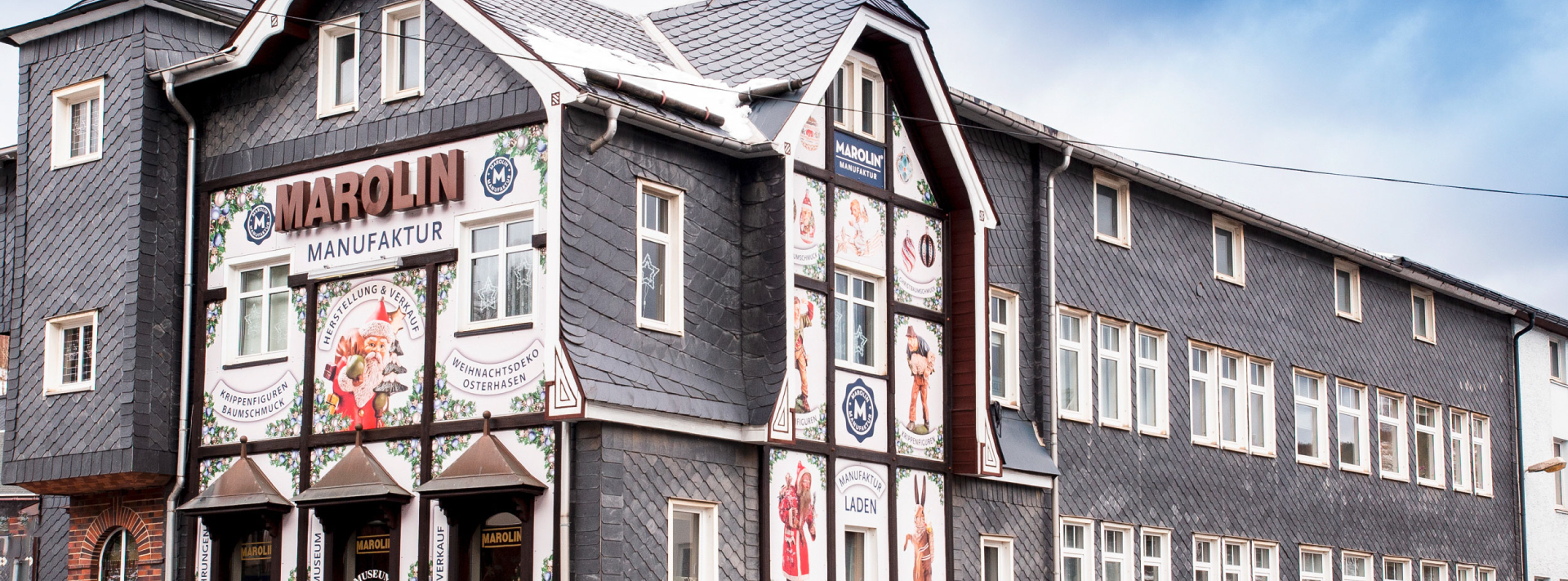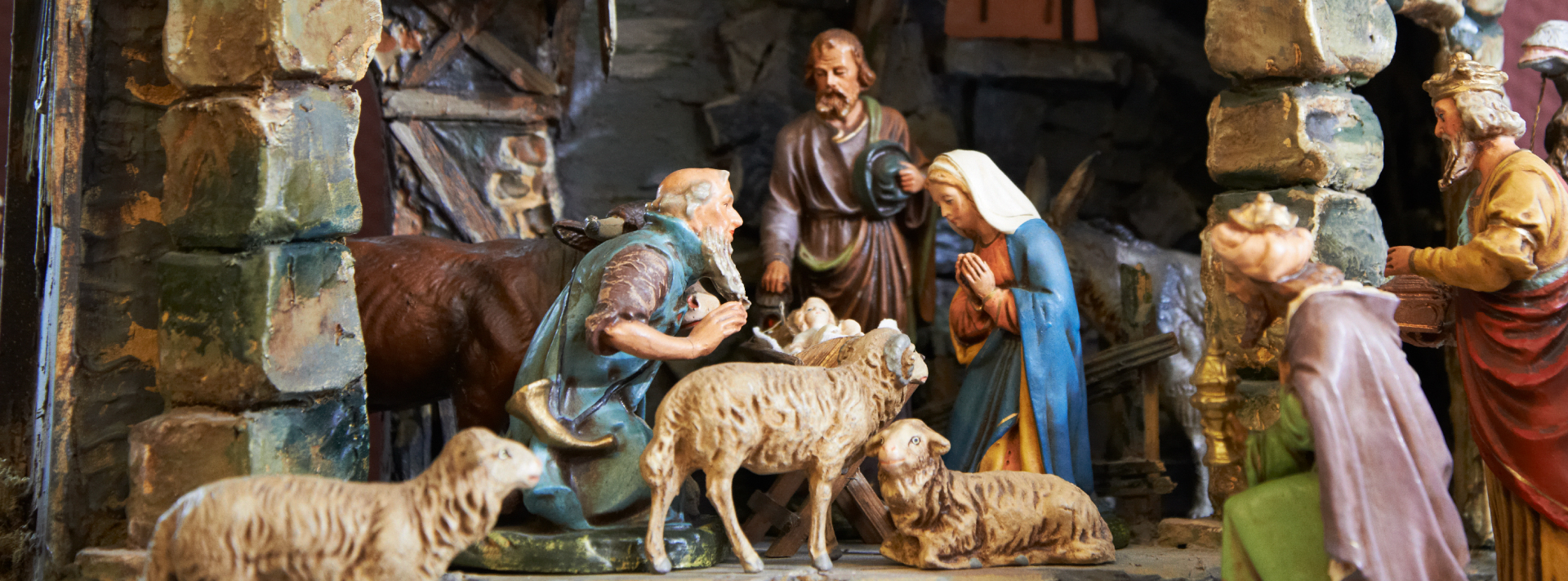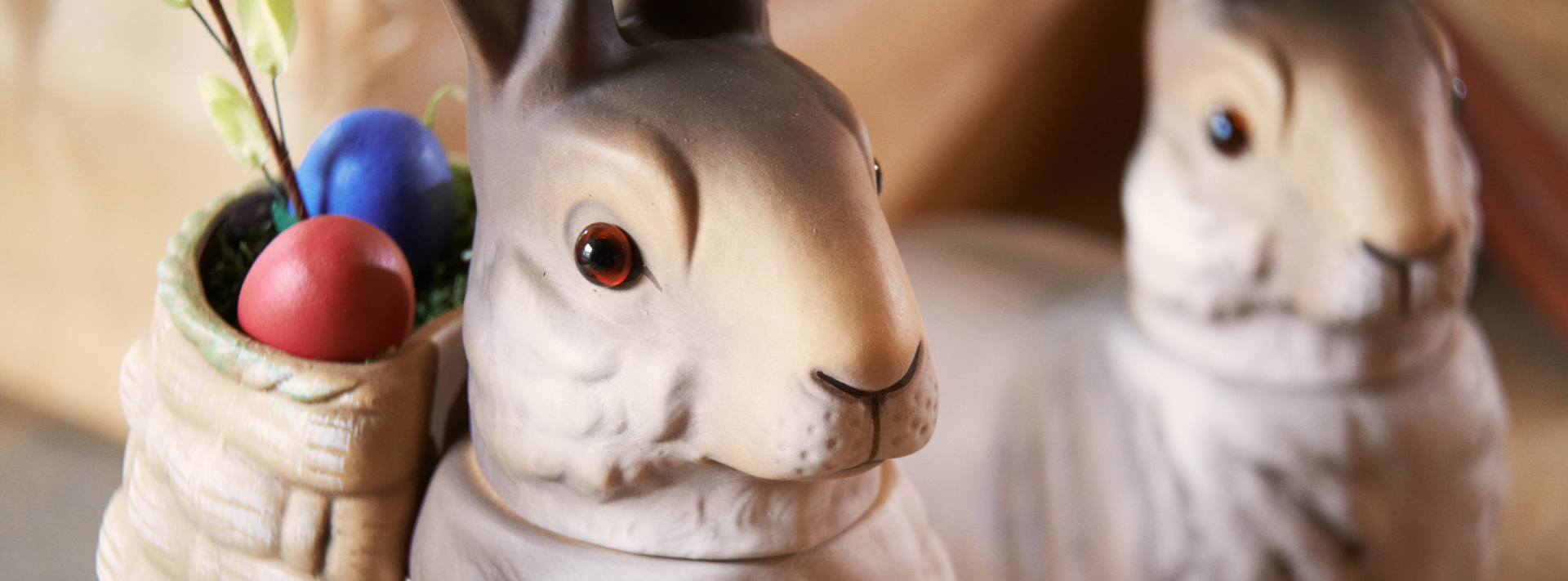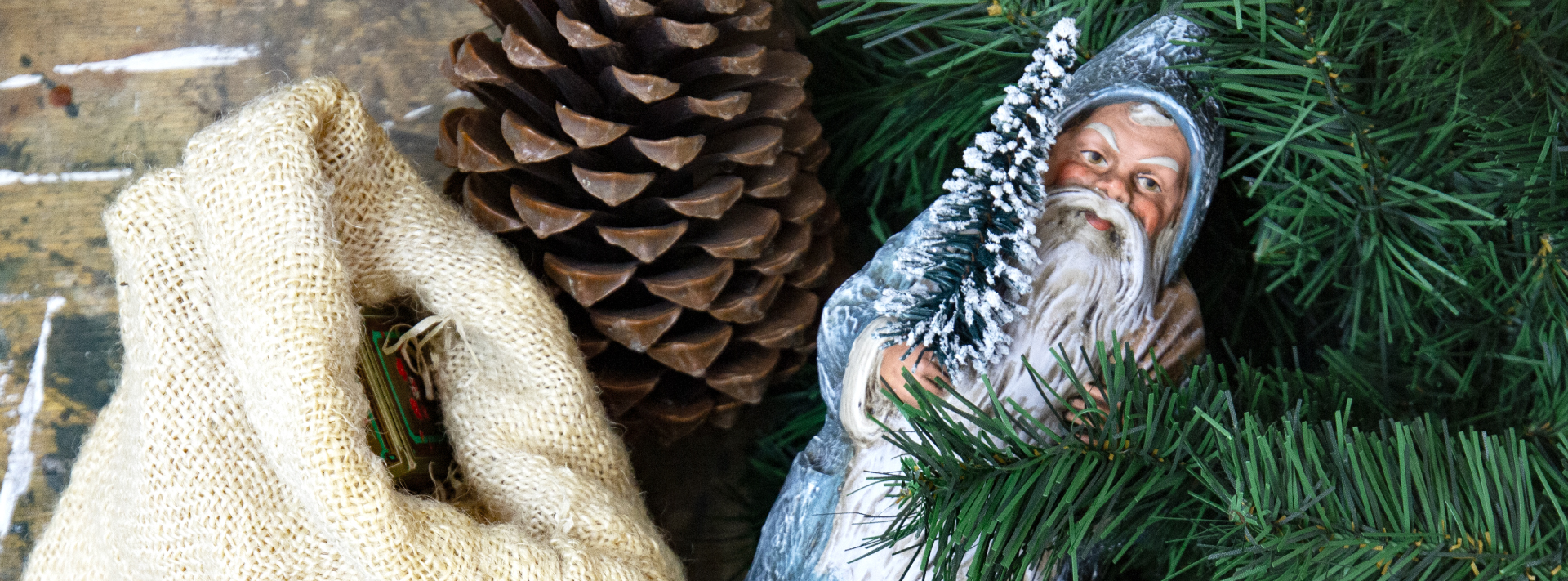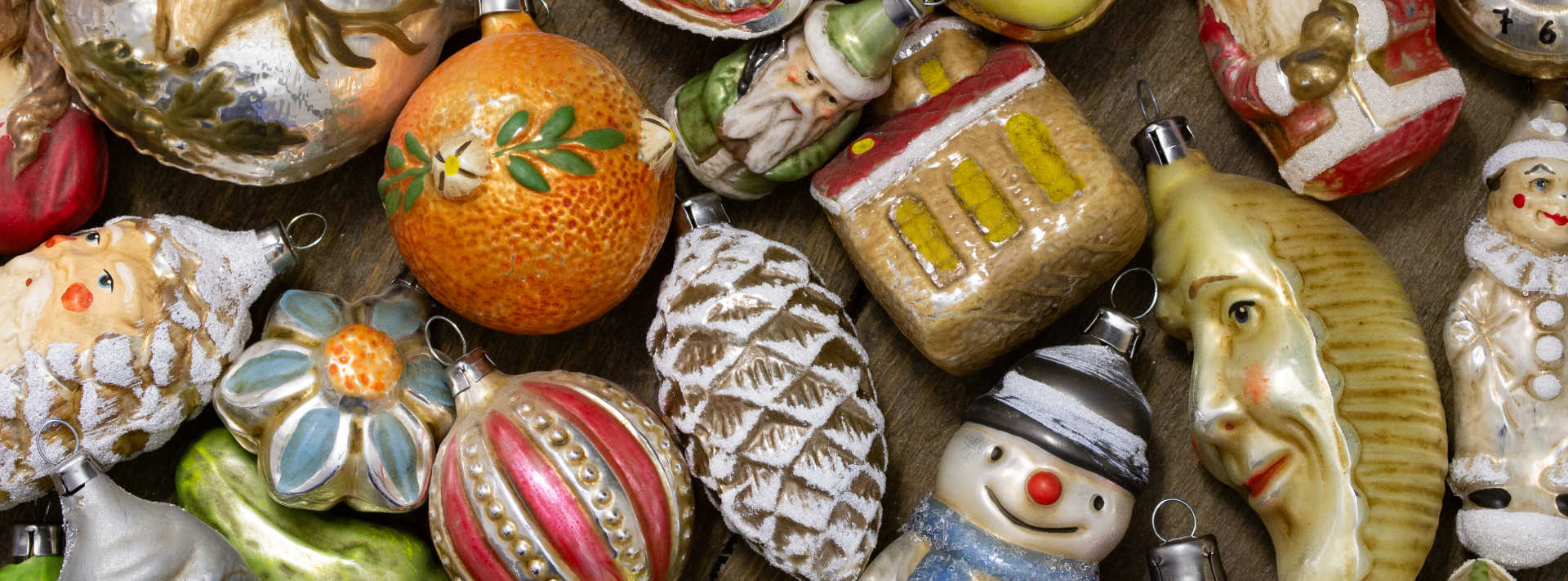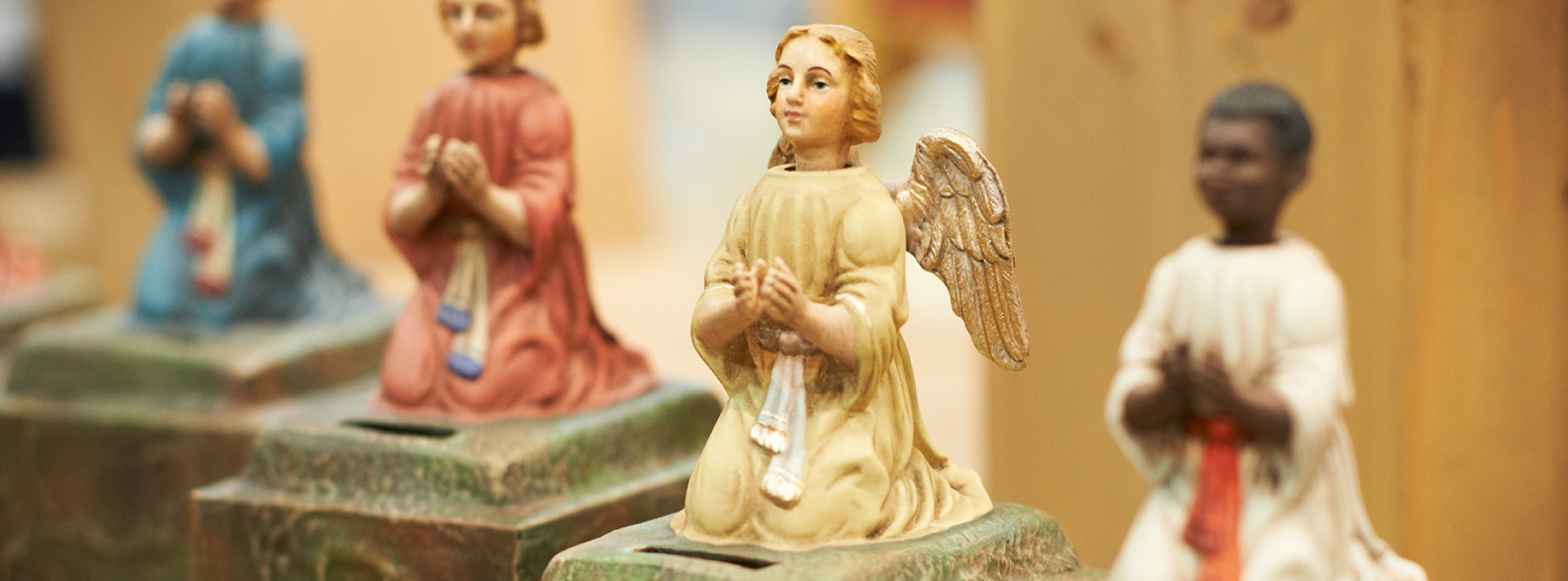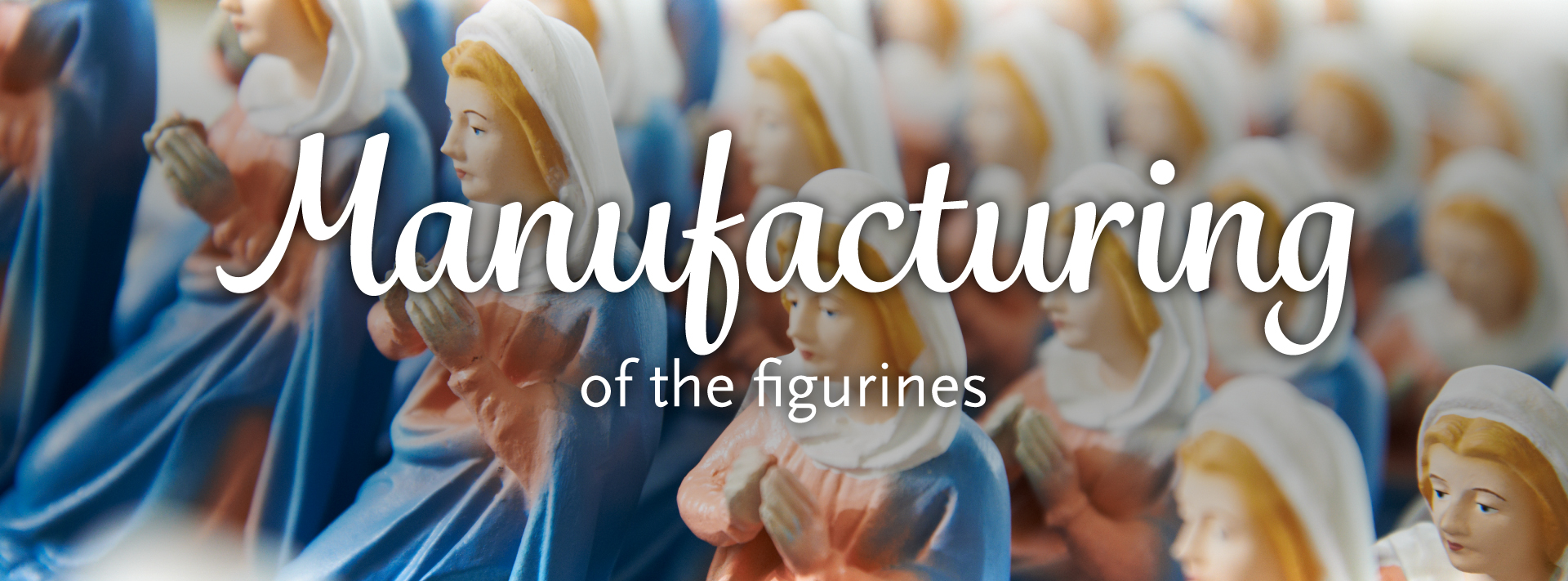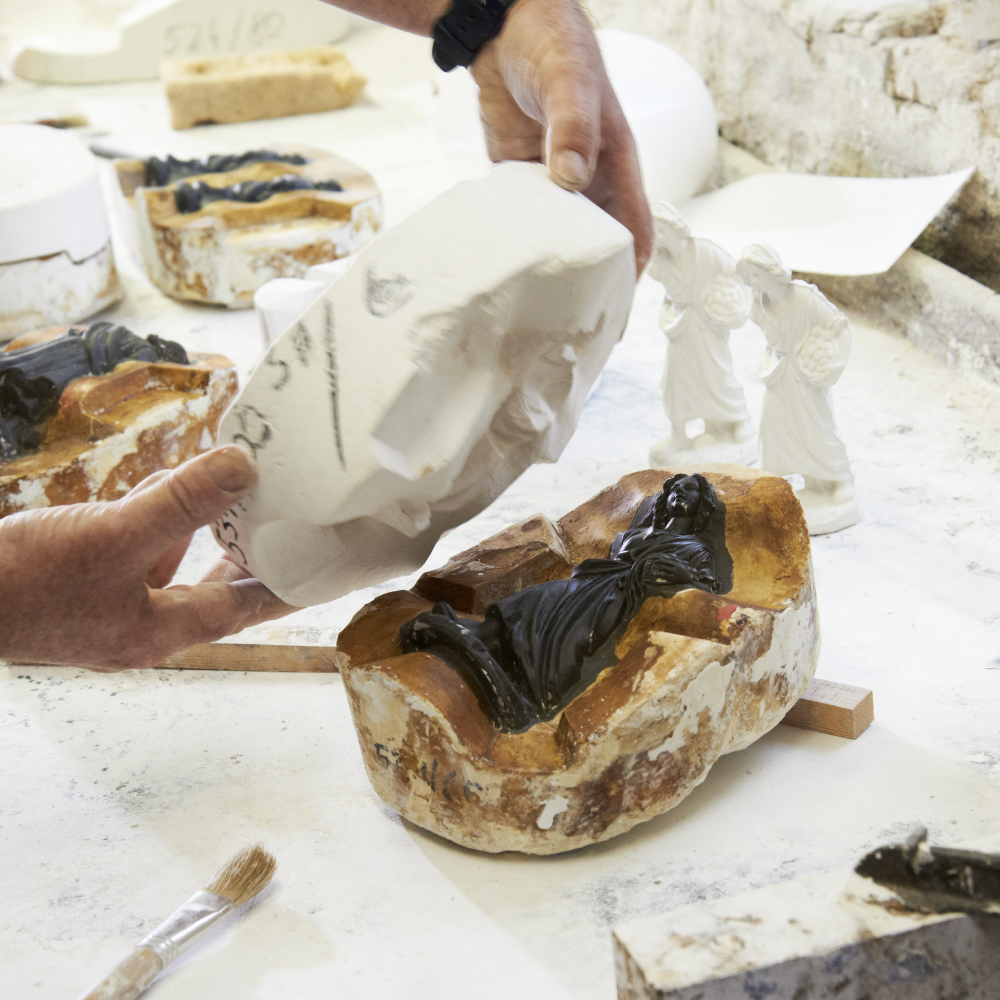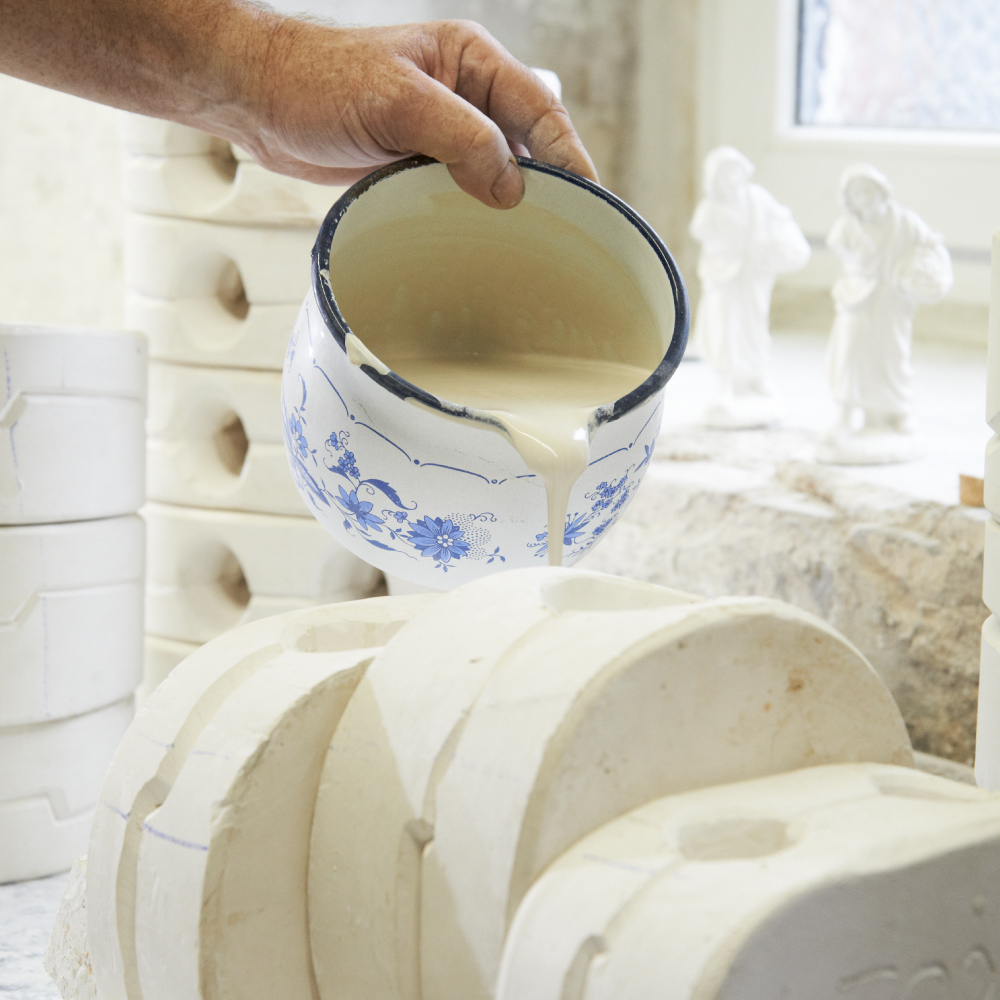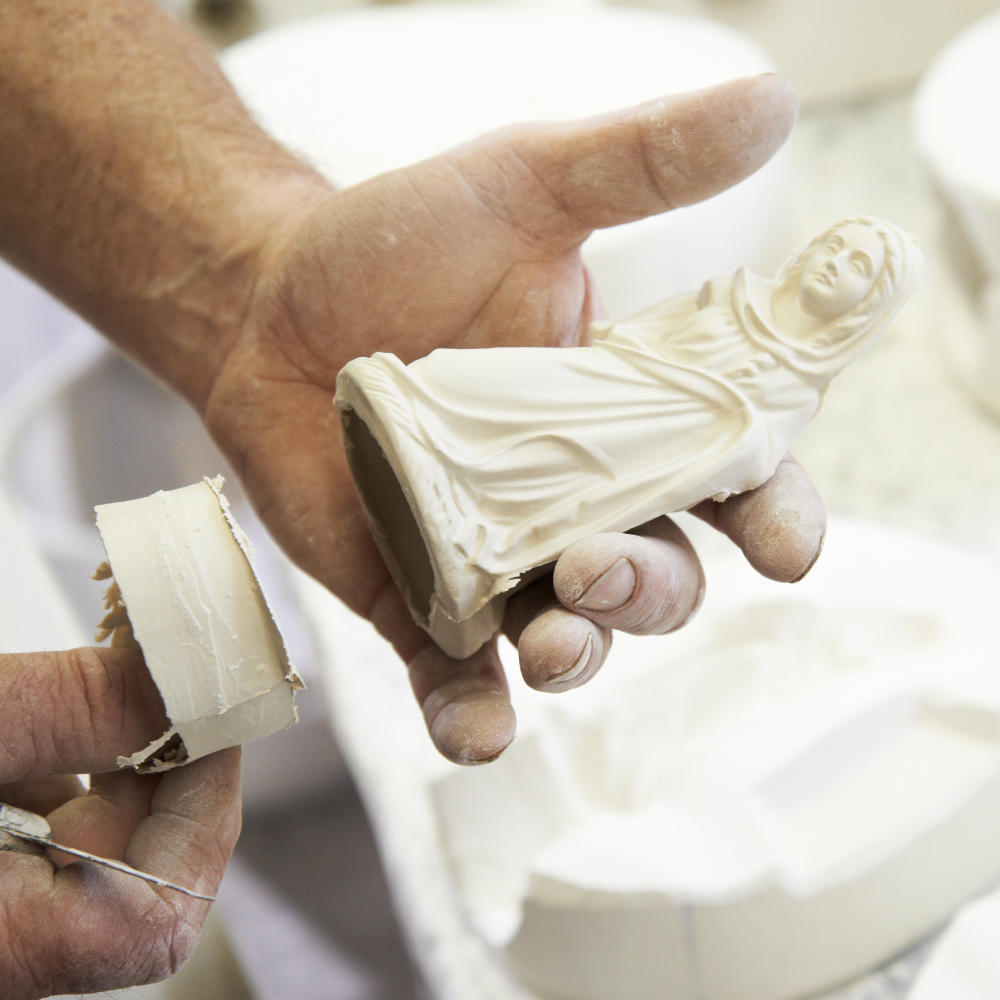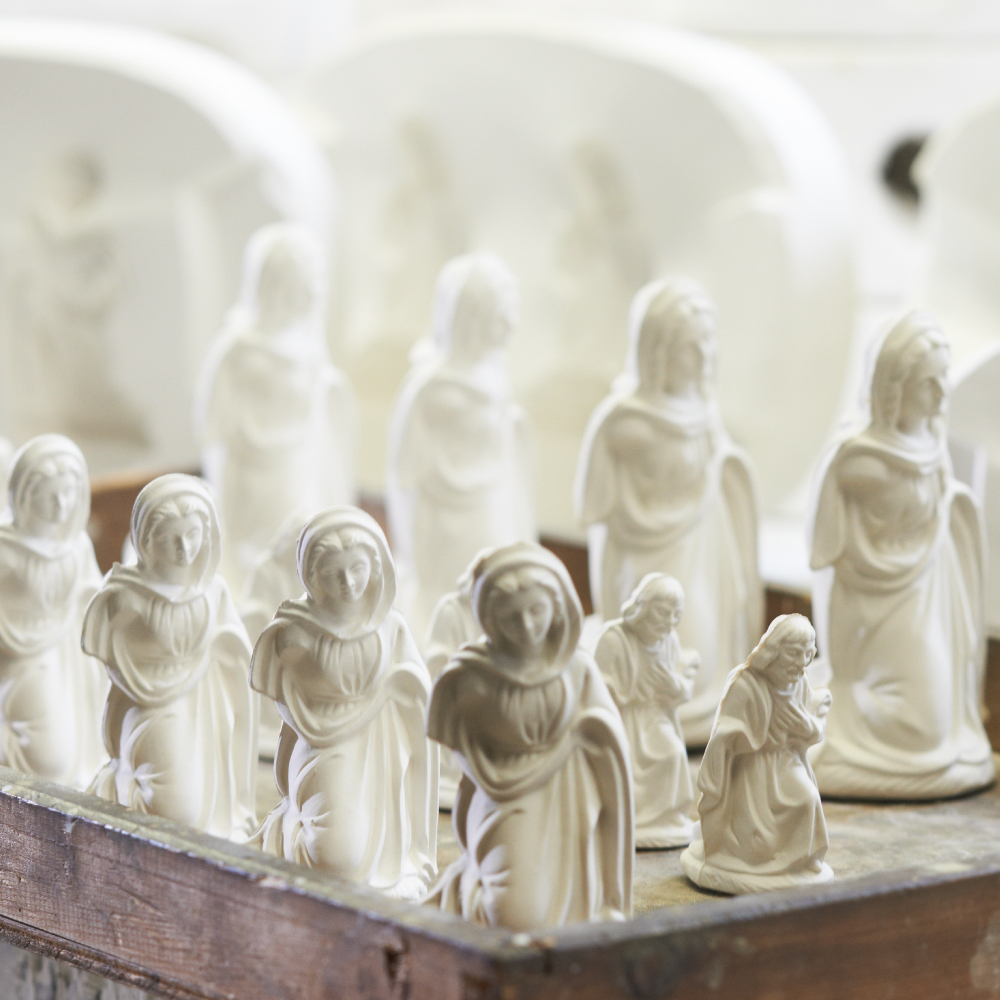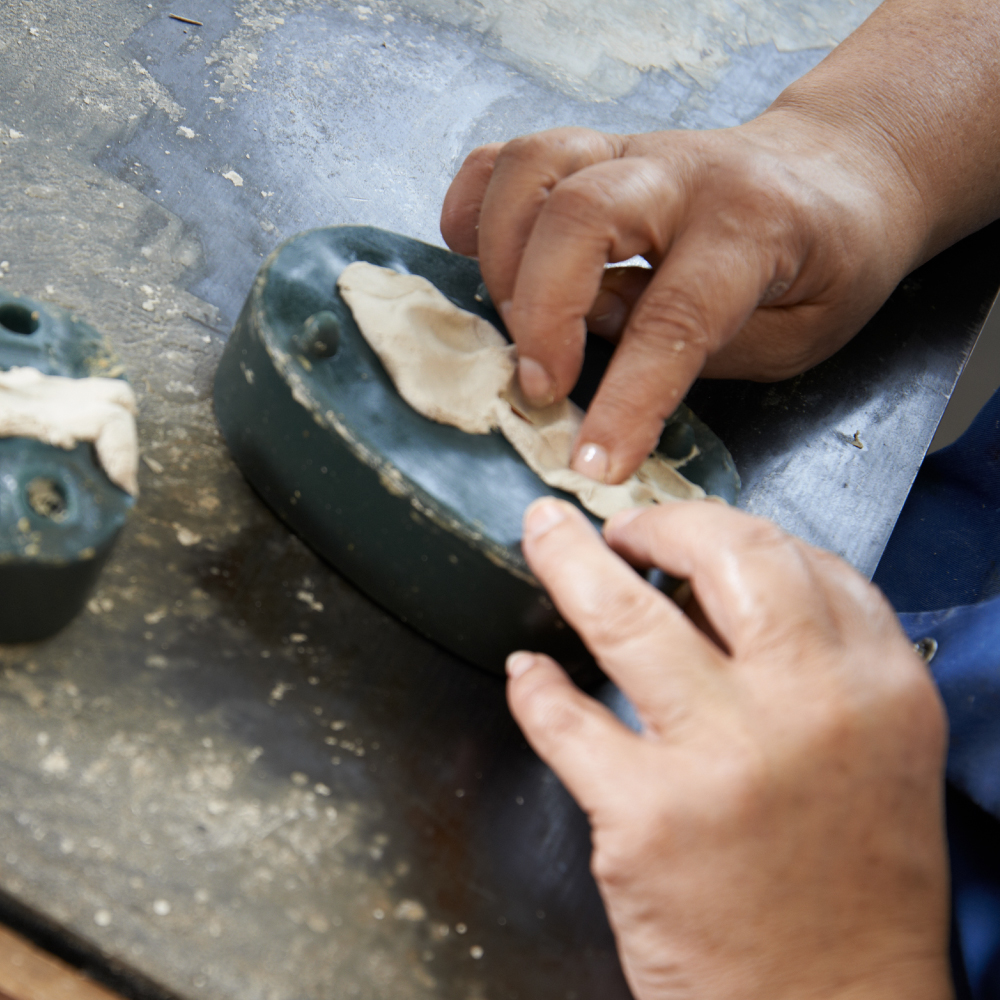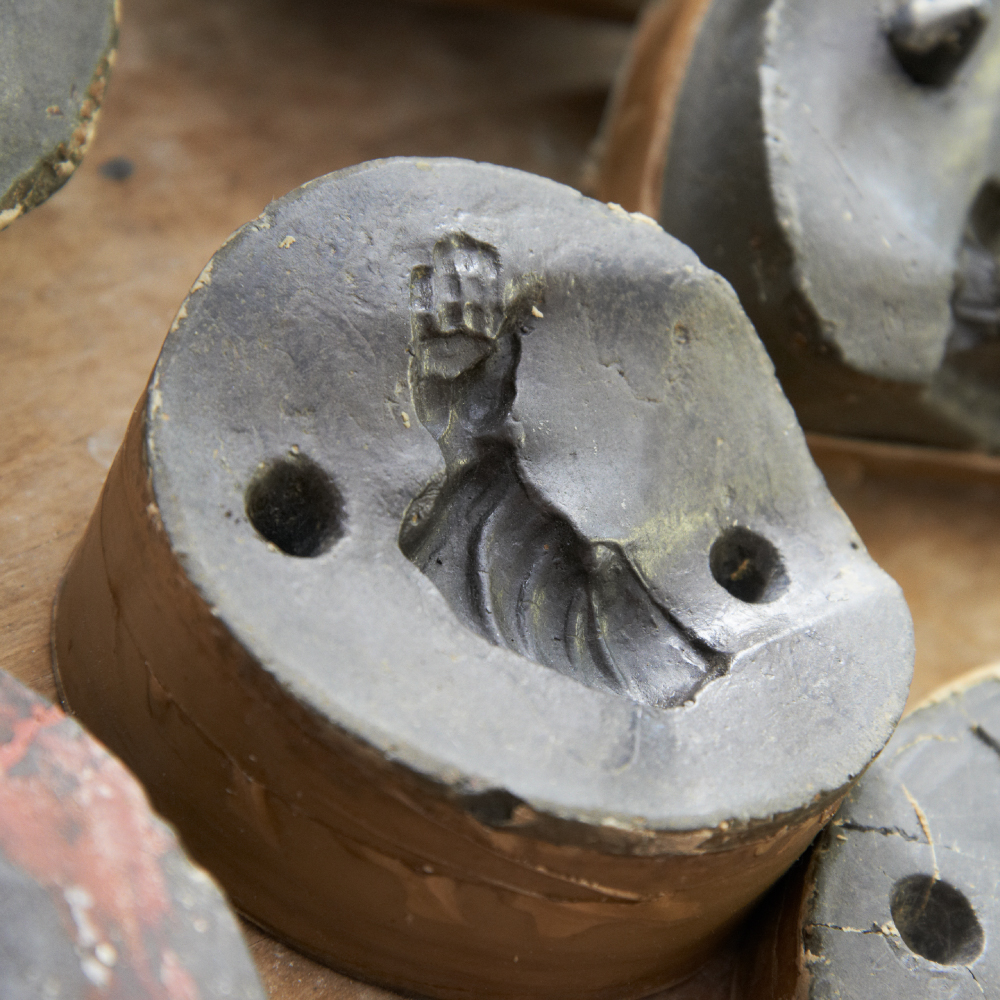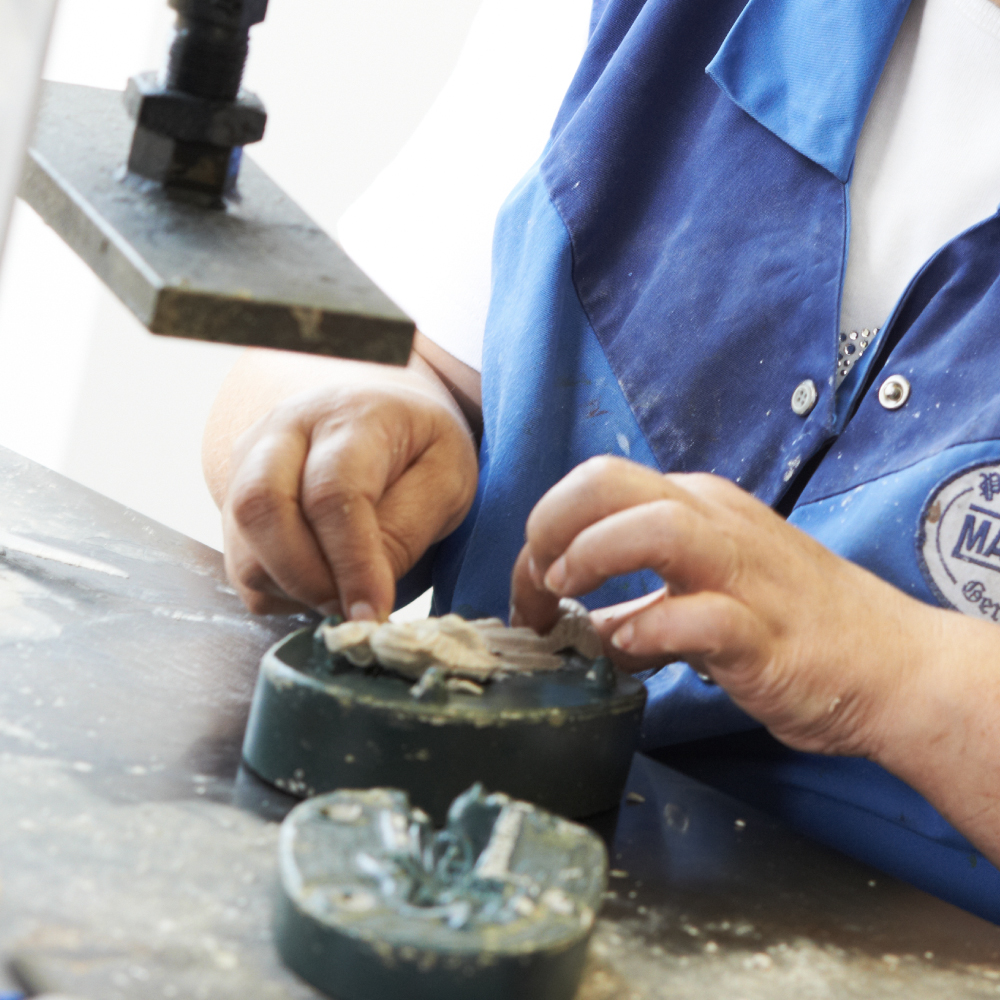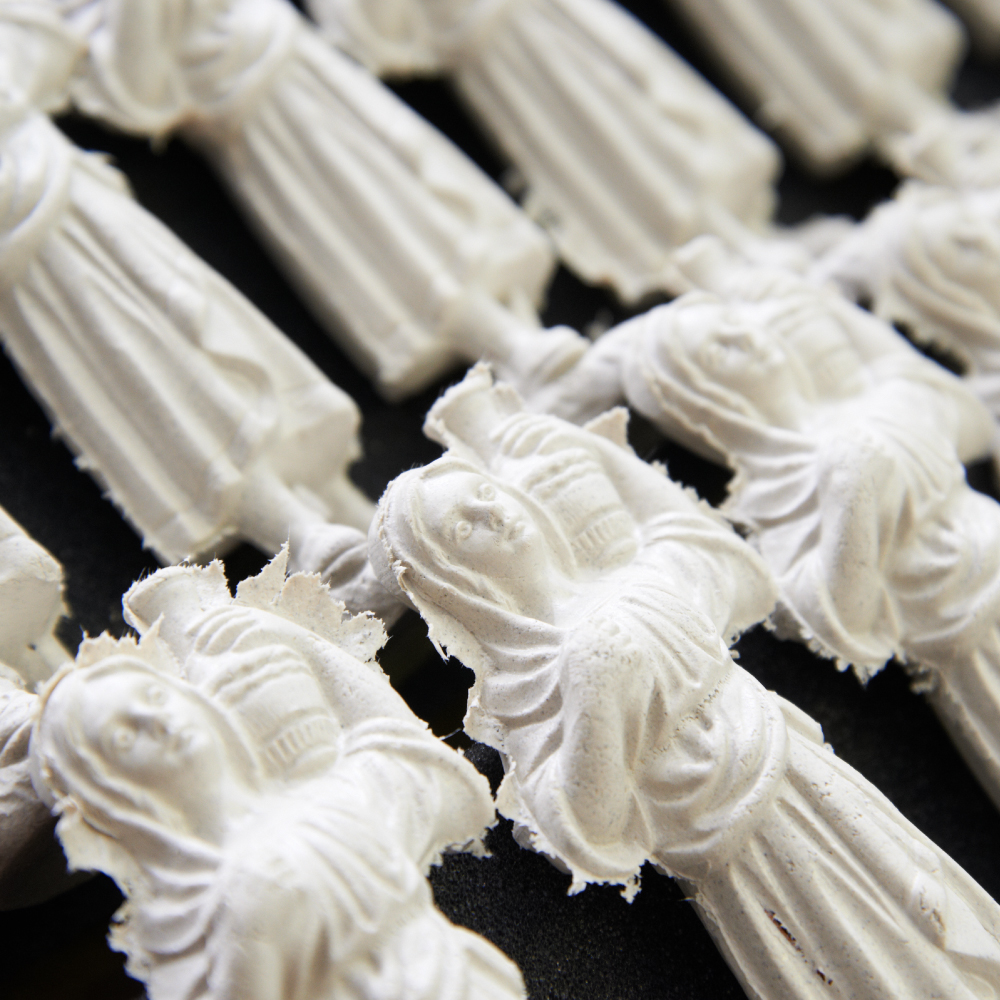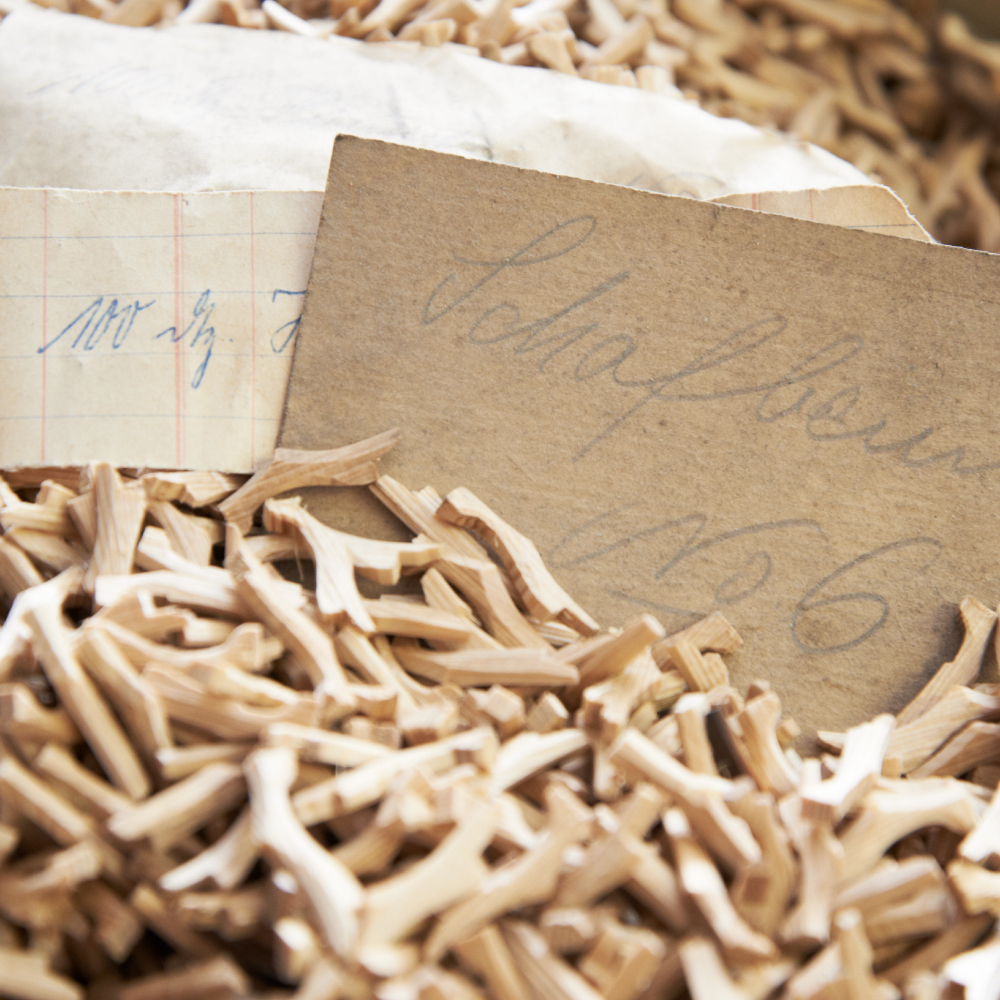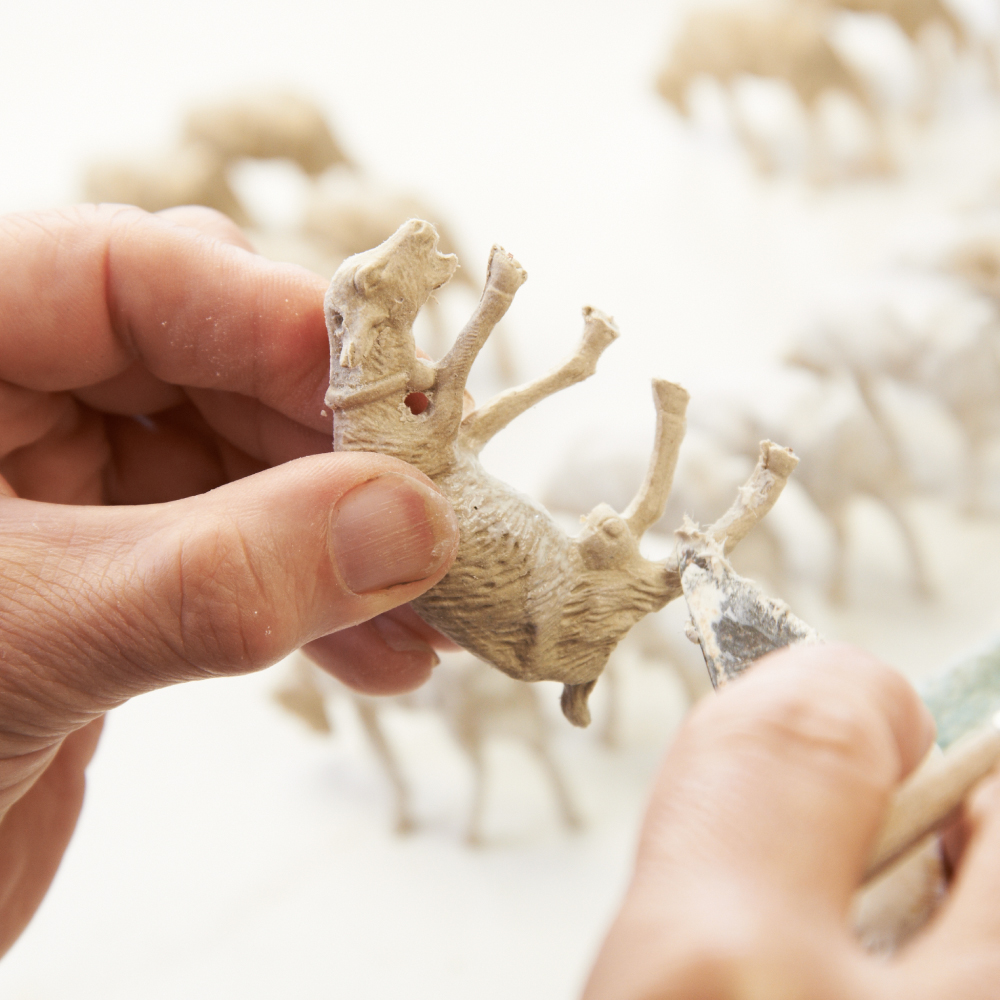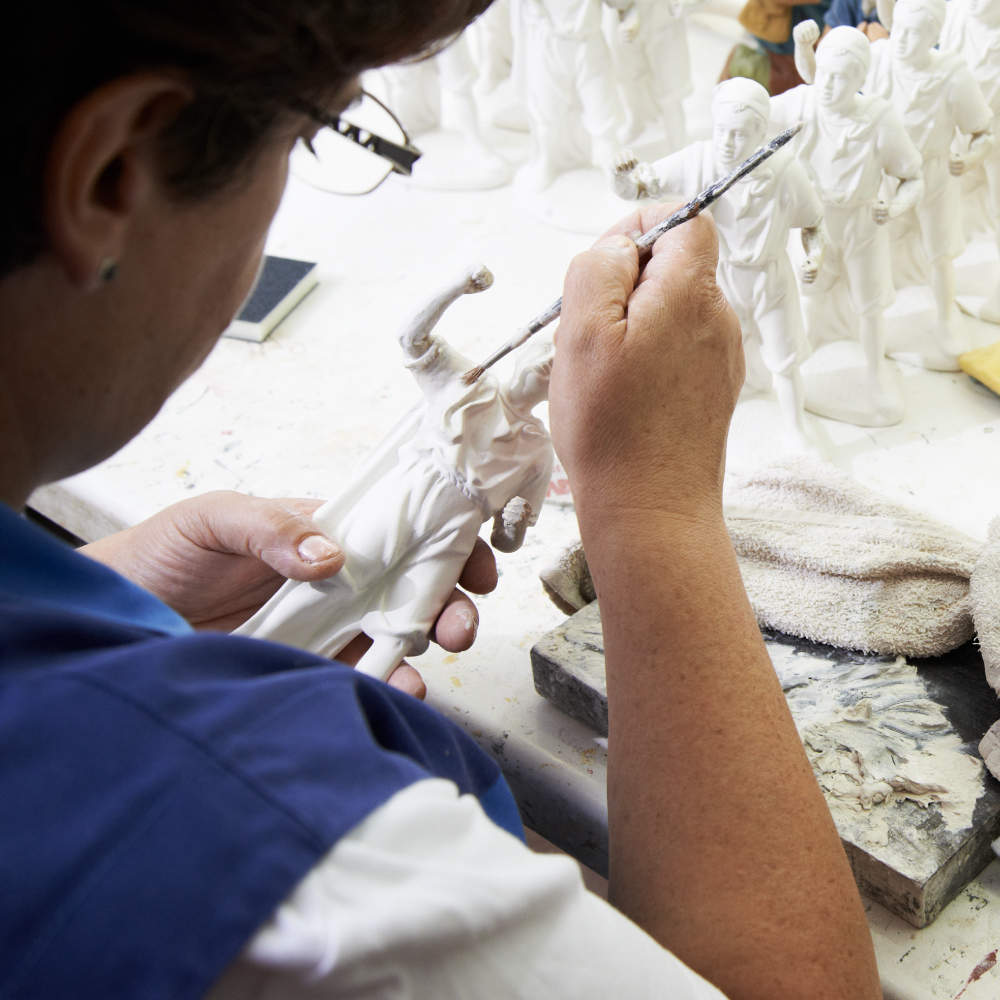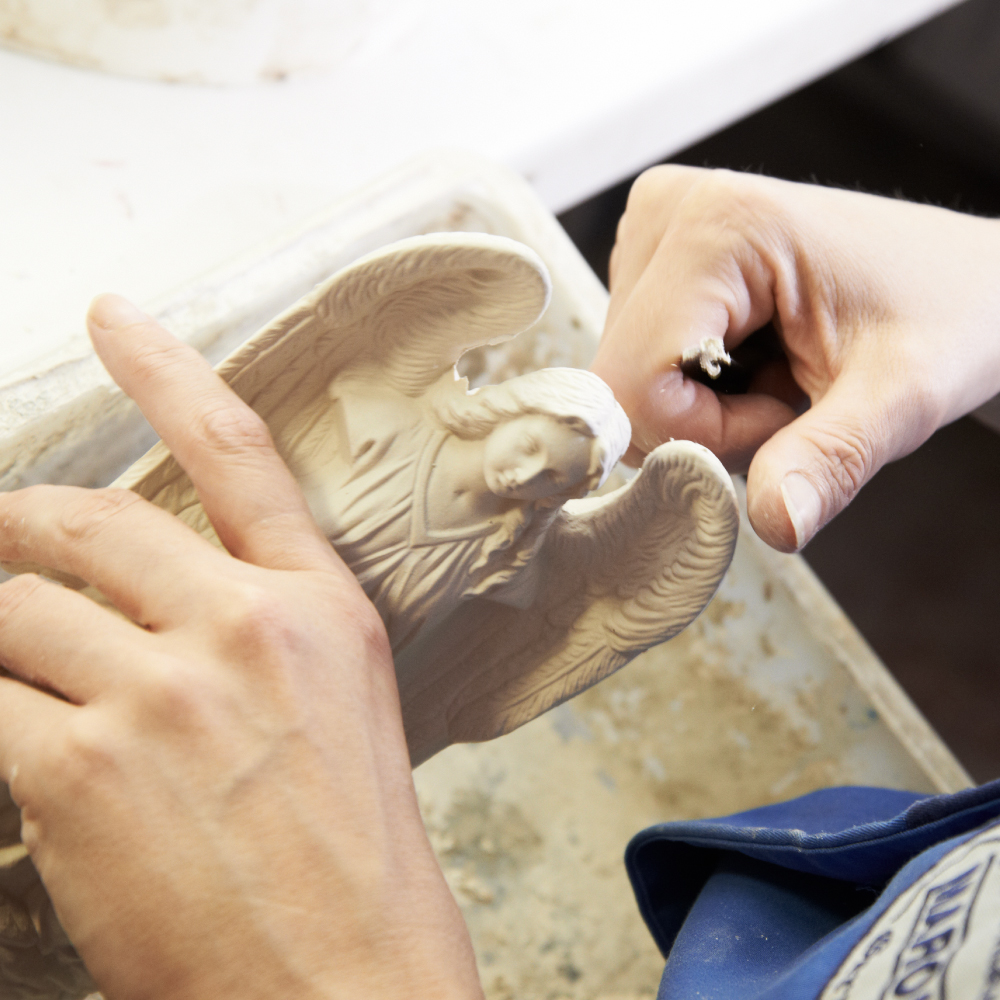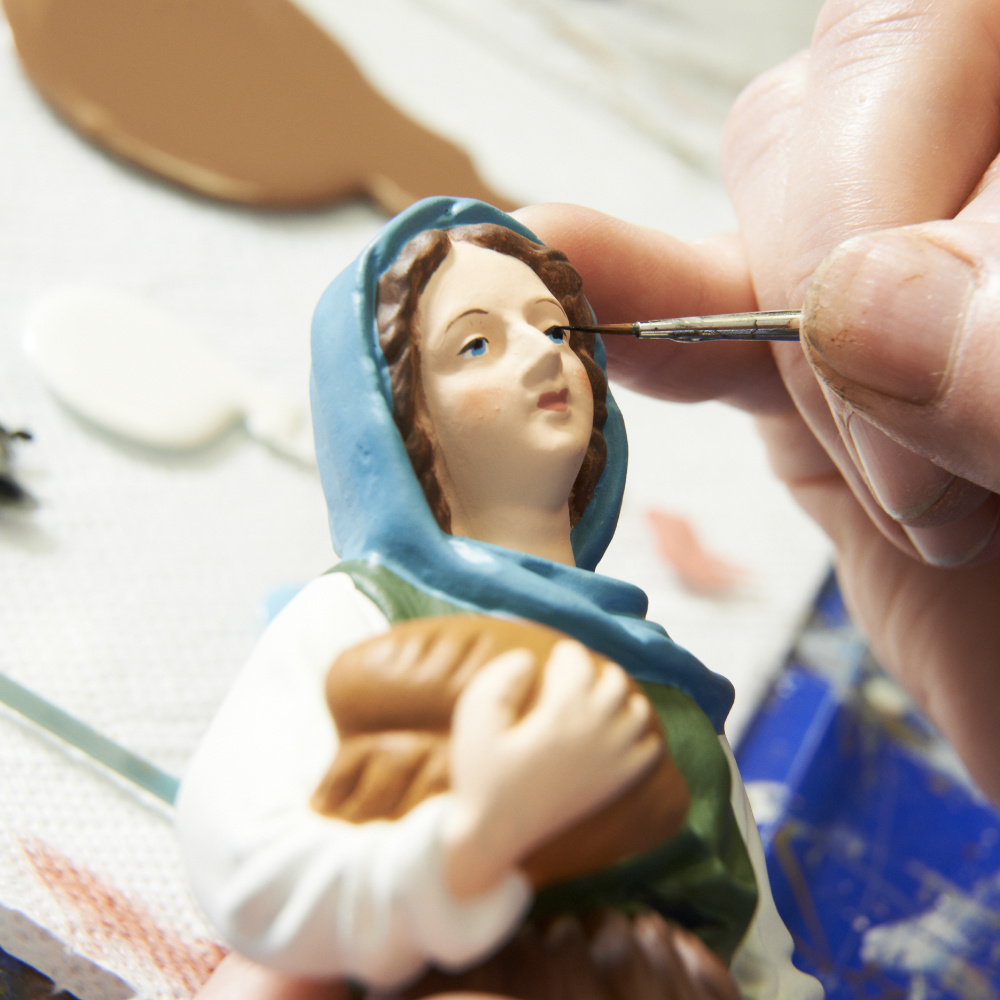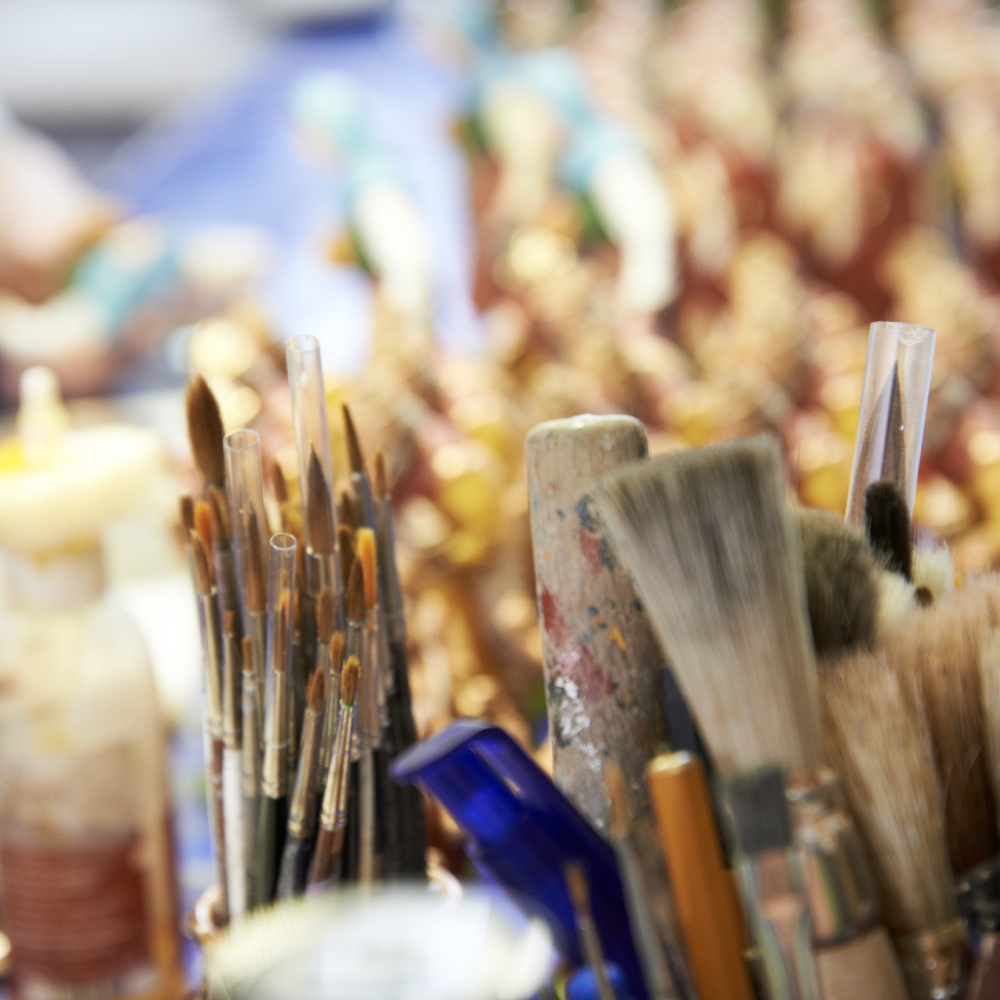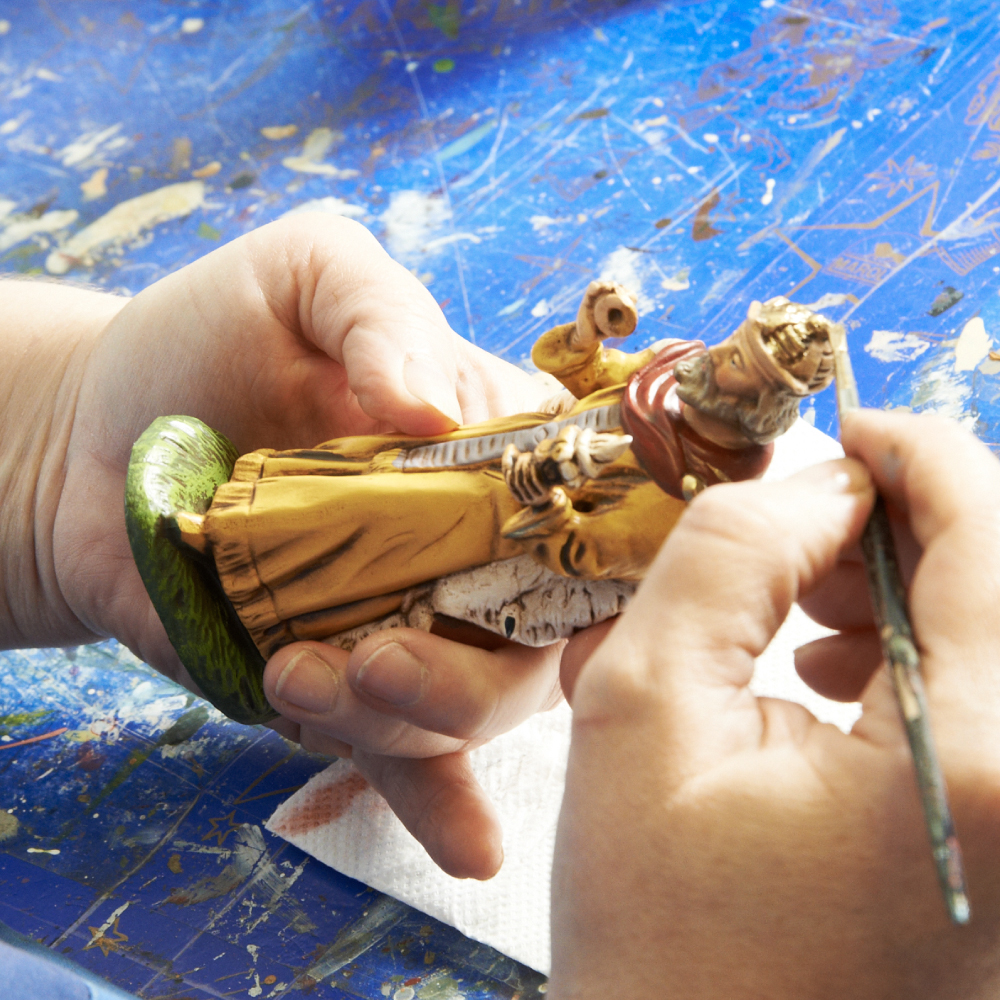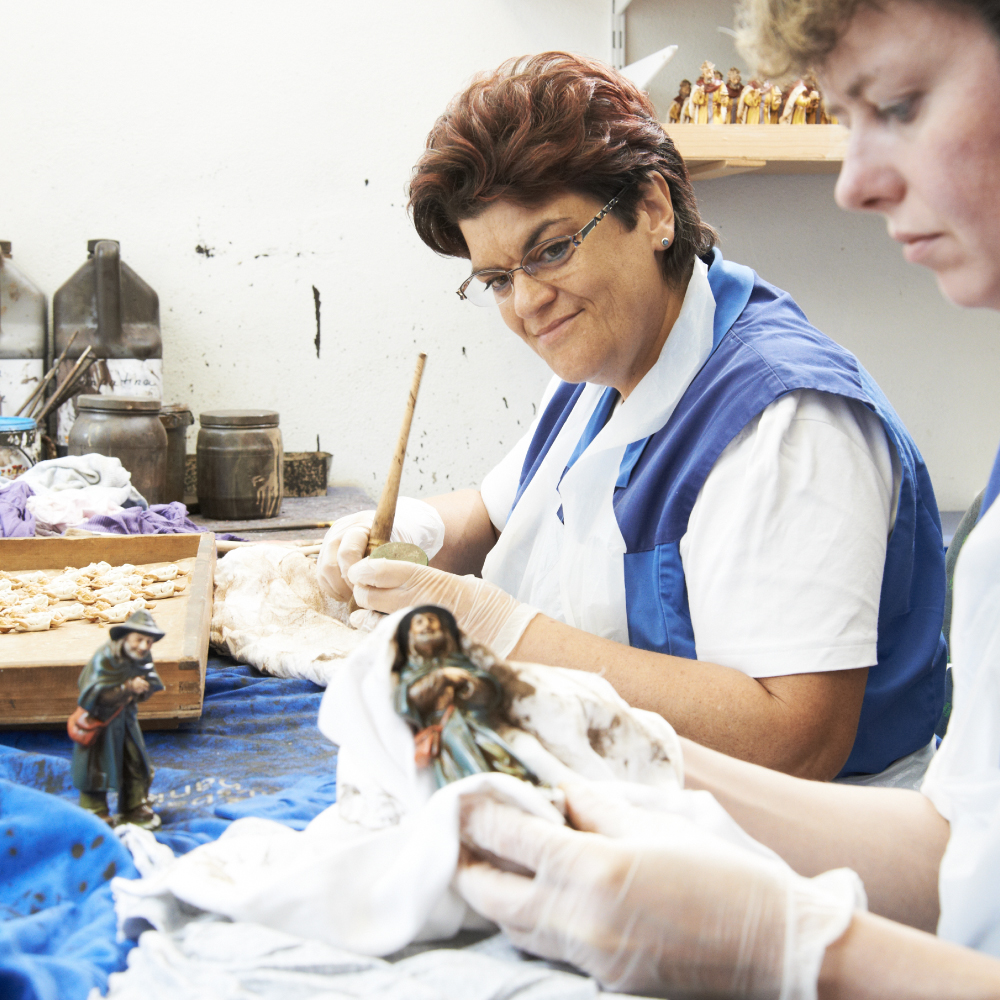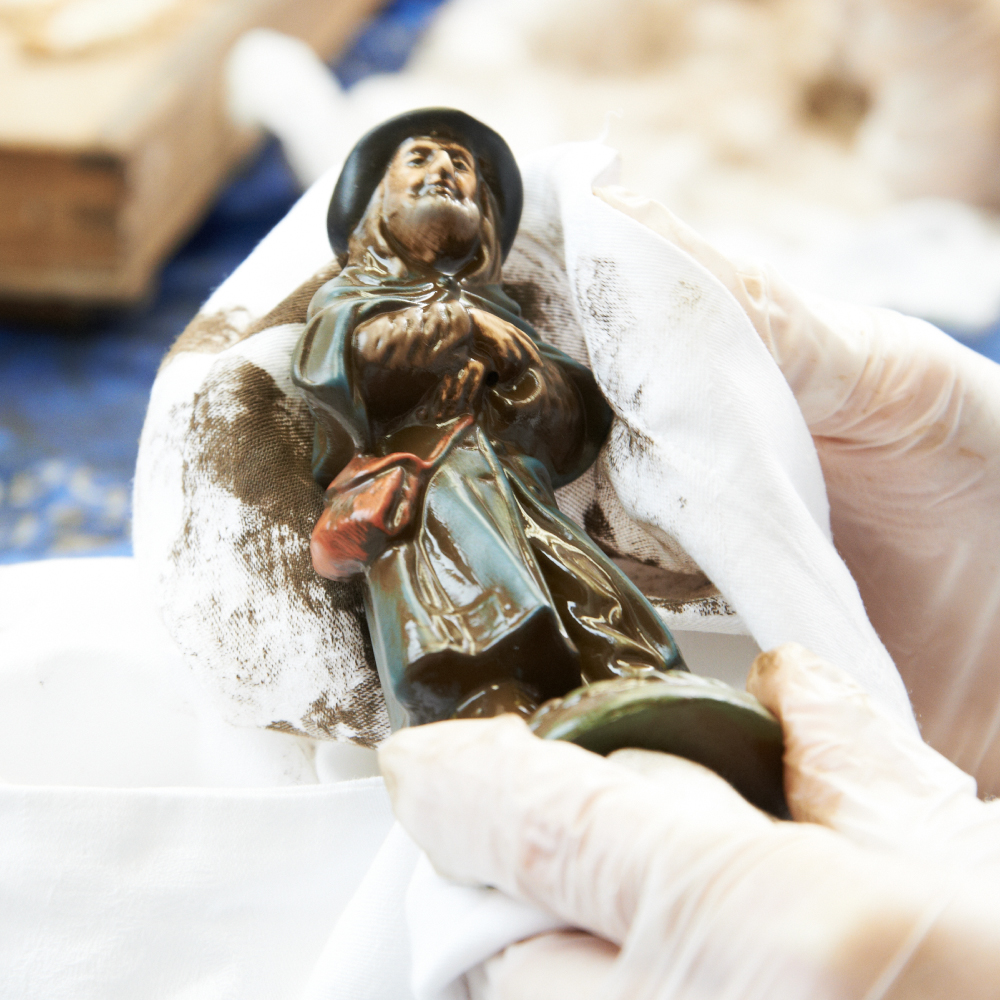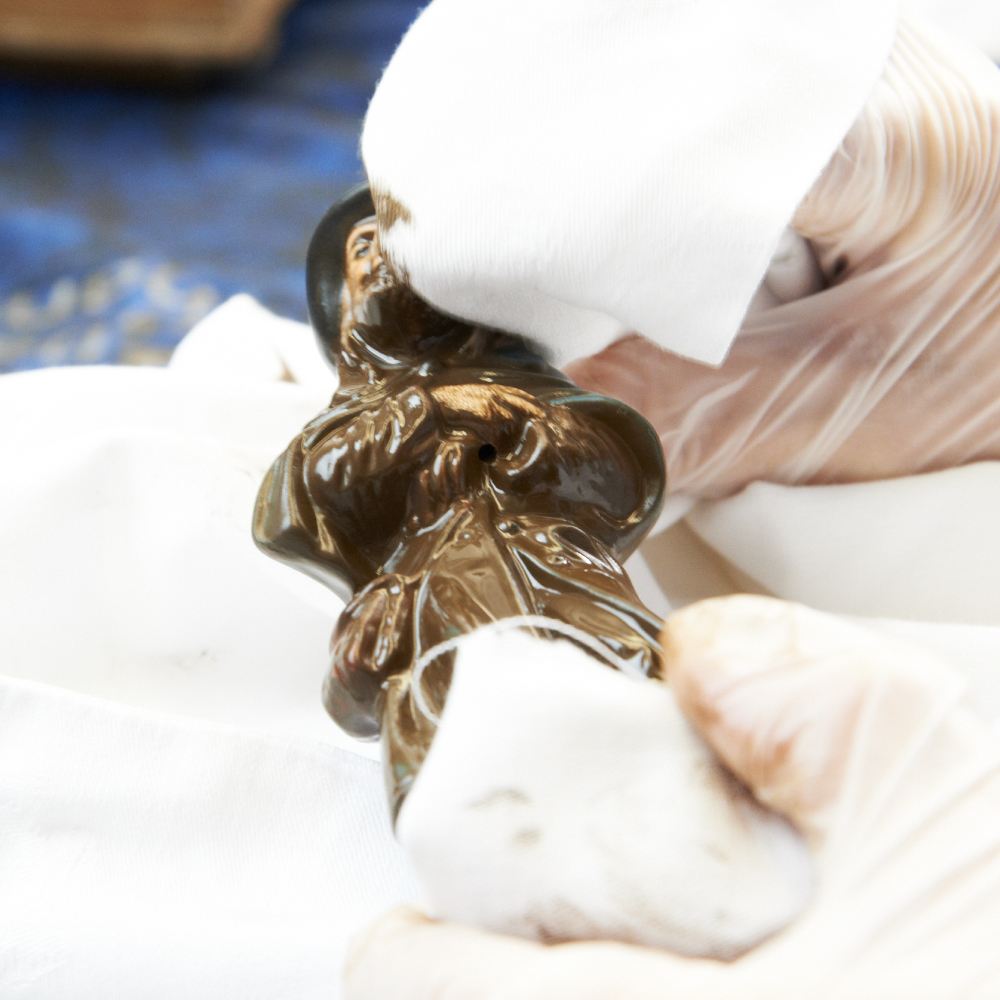

FIGURE CASTING
The production of figures through casting requires the use of so-called working molds. These molds are made of plaster, which is poured over the mother mold, enclosed with a plastic band. After some time, the mother mold and the working mold can be separated from each other.
Once the working molds have dried, the actual figure casting can begin. Liquid paper mache mixture is poured into the molds. The plaster absorbs the water contained in the mixture, and a thin layer of MAROLIN® compound forms on the inner walls of the mold.
After about 20 minutes, the mold is turned upside down to allow the excess mixture to flow out. The raw figures must then dry in the mold for approximately six hours before they can be removed. The "leather-hard" raw figures achieve their final strength only after drying in a drying oven.

FIGURE PRESSING
In pressing, plastic paper mache mixture is used and pressed into mostly two-part molds. Both appendages and complete, usually small, figures are manufactured using the pressing method.
Copper reinforcement wires are embedded in the pressing mixture to provide the necessary stability for the part.
The dried pressed parts need to be deburred, especially at the seams. This is done manually after the parts have dried slowly.

ASSEMBLY OF THE FIGURES
During assembly, the cast and pressed parts are put together, puttied, and sanded. These steps need to be repeated multiple times as there may be minor cracks due to technological factors. Only when the surface is flawless, the figures move on to the painting stage. Additionally, in the case of cast (and therefore hollow) figures, the bottom is sealed with cardboard or paper. The fully assembled figure is dipped into a glue-chalk bath to even out the surface. This is necessary to ensure that the materials used (casting material, pressing material, cardboard) later accept the paint evenly.

PAINTING
The large surfaces and typically the faces of the figures are sprayed. Suitable spray guns with nozzle sizes up to 0.3mm are used for this purpose. With these guns, even fine distinctions between different colors can be achieved.
All areas of the figures that go beyond the capabilities of spraying are painted by hand. Various tools such as brushes, sponges, pens, feathers, etc., are used for this purpose.
To prevent certain parts of the painting from smudging during the subsequent patination process, the figures are partially coated with matte varnish or shellac after painting.

PATINATING
During the patination process, the entire figure is coated with a dark patina liquid. This is usually done using a large brush. Subsequently, the patina is wiped off the surface with soft cloths.
The color remains in the crevices, while it is wiped away from the raised areas. This achieves the plastic, yet nostalgic effect that distinguishes the original MAROLIN® figures.
Finally, various gold decorations are applied, and certain parts of the figures are "highlighted." Additionally, loose parts such as rods, lanterns, etc., need to be attached.

At the beginning, Richard Mahr mainly produced nativity figures and religious articles. This range was continuously expanded and now includes over 1,300 figure models in eight different sizes. Oriental and alpine nativity scenes, as well as additional accessories, complete this assortment. Over the years, a large number of secular figures were also added.
Today, the displays of specialty retailers are populated with Santa Clauses, Erzgebirge figures, angels, animal models, and glass Christmas ornaments. Alongside the original MAROLIN® nativity figures, the traditional filled Easter bunnies are also particularly popular, as they can be used to hide sweets during Easter time.
The assortment is constantly supplemented with models from the inventory.

